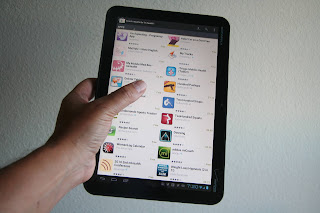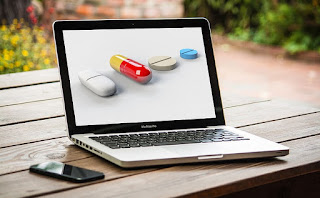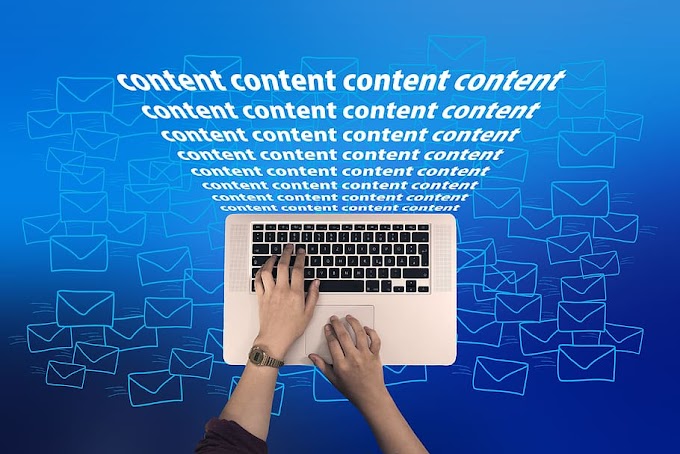A QUICK-START GUIDE TO DEVELOPING AN E-HEALTHCARE SOLUTION
Introductions to E-Healthcare solutions
In recent years due to the digital and smartphone revolution people's lives have changed dramatically and the medical field is no exception. People are no longer interested in waiting in long queues to get their medical records especially during Covid-19; they want instant access to their medical records in their smartphones. In developed countries, 80% of the doctor’s consultation and ER visits are easily handled by mobile audio and video calls and developing countries are also catching up. Insurance claims and medical billing can be easily handled through smartphones. Healthcare apps make it possible to provide urgent medical care even in remote and rural areas.
Recently Google Glass is also introduced in the healthcare sector. Many startups familiar with the benefits of Google Glass in the healthcare sector have started developing mobile healthcare (E-health) apps based on Google Glass.
The demand for E-Healthcare solutions has grown at an unprecedented rate due to the demand for E-Health apps in the healthcare sector. Powered by AI (artificial intelligence) E-health apps can give cutting edge E-Healthcare solutions. It is estimated that CARG (Compound Annual Rate of Growth) for global mobile health apps from 2020 to 2026 will be around 45% and is likely to generate approximately 240 billion dollars by 2026.
After 2016, the majority of demand for E-Healthcare solutions is regarding EMR and EHR. EMR (Electronic Medical Record) means the digital chart of the patient’s disease and treatment and usually maintained by one doctor. On the other hand, EHR (Electronic Health Record) contains the patient’s record from many doctors. It provides a long-term perspective of the patient’s health.
Even during Covid-19 when other industries are suffering losses, IT companies which are providing E-Healthcare solutions are earning profit and the demand for E-health apps have only increased.

eHealthcare apps for Android and Tablets
CONSIDERATION TO KEEP IN MIND
Monetization plan: The different pricing models
The E-health app which is considered to be beneficial for E-Healthcare solutions is equally beneficial for the developer as well. Below mentioned are different pricing models for E-Health Solutions:
1. Freemium
Freemium is the word which is used for both the free and the premium version which is available for the same application. One of the best part of this feature is that the developer can monetize through its premium service. Initially, the user is given some degree of free access to the service and gradually when the user likes the service, he/she can upgrade to premium service. The notable part of this model is that the user is aware of what he/she is paying for.
2. Registration and subscription models
Subscription and registration fees are one of the most common revenue earning models for mobile app developers. Doctors and patients both can take the benefit of these apps by paying registration and subscription fees and in return get useful data.
3. Promotions and Partnership
A mobile app developer can benefit from partnerships with healthcare providers. They can promote the healthcare provider’s product and services by informing users of the special discount the caregiver is providing.
4. Google Play Store
As Google has a very large audience all over the world, Google can also be used to monetize the app. The developer can put his app in Google Play Store where he can earn a lot of revenue through in-app purchases and advertisement.
5. Sponsorship
A mobile app developer can also monetize through sponsorships. The developer can place the sponsor’s logo on the app and in return get paid
UI and UX considerations
The two most important factors which need to be considered while developing an app are UI (User Interface) and UX (User Experience). The User Interface should be simple and user friendly as most of the patients using this app are elderly or temporarily/permanently disabled. Implementing voice recognition software will be an added advantage in improving User Experience and will prove to be beneficial for both the doctor as well as the patient. Regarding UX (User experience) only 20% of the E-health apps are providing complete customer satisfaction but with the growth in AI technology, good user experience is increasing. So while developing a E-Health app great care should be given regarding UX and UI. Special emphasis should be given to colour as it is related to both UI and UX because a sharp and bad colour combination will give a bad user experience.
Data regulation that needs to be enforced
While providing E-Health solutions special care should be given to the targeted audience region because data regulation laws enforced in each country is different. Below are some of the data regulation laws in different countries
United States:
An E-Health app for the US market must be in complete compliance with HIPAA (Health Insurance Portability and Accountability Act). At present, HIPAA is very strict and is strictly implemented even on patient’s records which are outsourced to other countries like India. Special care is taken to protect patient’s social security number etc to prevent its misuse.
European Union:
In Europe, E-Health app should be compliant with GDPR (General Data Protection Regulation) which came in to effect from 25 May 2018.
United Kingdom:
In the UK, the data regulation act is the Data Protection Act (DPA 2018).
Canada:
In Canada, it is the Personal Information Protection and Electronic Documents Act (PIPEDA).
Asian Regions:
In recent years, Asian countries have implemented several data regulatory acts similar to America and Europe like Singapore’s Personal Data Protection Act (PDPA) which was enforced from 2014.
Main features needed to be included in the E-Health app
A good developer studies his target audience before creating software and regarding E-Health solutions, the app should be able to collect and analyze patient’s data from several sources.
At present only 20% of the E-health apps provide the complete list of desirable features they are:
· Access to EMR/EHR reports.
· Information on the doctor’s schedule.
· For managing appointments (both doctor and patient).
· Track and monitor vital signs like blood pressure, pulse rate, respiration rate and body temperature.
· Data on lab test results.
· For prescription reminders.
· For prescription refills.
· Notifications on the latest hospital procedures.
· To call the doctor for urgent care.
· The app should be Hackproof because if hackers gain access to critical systems like pacemaker it can be very dangerous to the patient.
· Able to view doctor’s review by other patients.
Service integration
When developing E-health apps service integration is one of the most important factors. It means the ability of the app to integrate with other healthcare systems and provide a good user experience. Hospital staff uses a wide variety of software, equipment, EHR solutions, medical sensors etc which a developer must take into consideration while developing a medical mobile app so that his app can be integrated with these systems.
At present different IT companies offering E-Healthcare solutions in addition are also offering cloud hosting solutions to their clients to protect them from data loss and data theft. You as a developer can also integrate this into your app.
Conclusion:
As the demand for E-Health Solutions is increasing, E-Health app can prove to be beneficial to your client’s healthcare business with better UI (User interface) and UX (User Experience), better monitoring of vital signs of patients through sensors, proper access of EHR and EMR data in the app and improved security for the patients’ data.





0 Comments